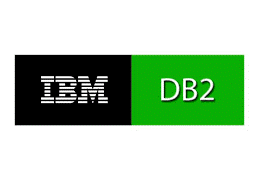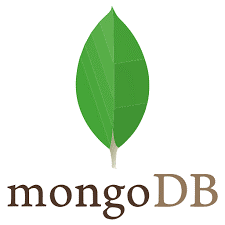IBM DB2 vs MongoDB
DB2:

IBM developed the Database named DB2. It is a database that follows relational database management system principles. By using DB2, we can fetch the data, analyze it and store it efficiently. DB2 is based on Object-Oriented features and non-relational XML structures. It is a group of related data management products that include data servers developed and marketed by IBM. It is developed on a concept based on SQL, i.e., standard query language on the relational database system, which means DB2 uses SQL queries to retrieve and store the data into the Database. We can use DB2 on AS/400 IBM mainframe and personal computers.
DB2 also supports the storage of non-relational formats like XML and JSON DP. It is not open-source but provides some free distributions, and IBM fully owns it, and if we want to run on large servers should have to pay for the licensing.
Let's see some advantages:
DB2 has been around for years and has matured as a robust RDBMS.
1. Powerful Structures Query Language
2. Various Platform support.
3. IBM Support
4. Fetching of data is significantly fast
5. It provides high security
6. It is independent
7. It provides very high concurrency, Allowing multiple applications and users to access the data parallelly and Concurrently.
8. Redundancy is low
9. It provides flexibility with the designs
10 It offers easy access, and user is not required to know the physical relationships of the Database they wish to access
11. It is reliable, secure and offers high availability
12. It can efficiently handle large volumes of data
13. It can work with various operating systems
let's see some disadvantages
1. It is not open source, so we need licensing, which is quite expensive, and support is paid.
2. We can create the tables, but it should be within block sizeof tablespace.
3. It consumes mainframe processors
4. It is difficult to resolve the issues and debug the issue.
5. The BIND process is time costly for the larger plans.
MongoDB:

It is a document-based database that offers high availability, high performance, and simple scalability. It is cross-platform, and it is based on concepts like document and collection.
Let's see some terminologies:
Database: it is a container of the collections, i.e., the collection resides in a database. . Every Database has its own set of files in the file system. A MongoDB server usually has various databases.
Collection: It is a batch or collection of MongoDB documents, and it is the same as the tables in Relational database systems. Every document contains various fields. Usually, all the documents present in the collection are of the same type or related.
Document- it is a set of Key-value pairs. The schema of documents is dynamic. Meaning if the dynamic schema is that the documents in the collection do not have to contain the same fields or same structure or common fields, a document 1in the collection can contain various types of data.
| SR no | IBM DB2 | MongoDB |
| 1 | The developer of this database is IBM | The developer of this database is MongoDB Inc. |
| 2 | It was initially released on 1983 | MongoDB was initially released on 2009 |
| 3 | The primary database model is relational DBMS | The main database model for this database is also Document Store |
| 4 | Locking model is Pessimistic in this database | Locking model is optimistic in MongoDB |
| 5 | The backup functionality is very efficient if compared to MariaDB | If compared with IBM DB2 it is less efficient with backup functionality |
| 6 | It is a commercial software we need license to use it | MongoDB is a opensource software |
| 7 | We need to do in place updates | We donot need to do inplace updates |
| 8 | Well known companies like JPMorgan, Bank of America, Citi, wells Fargo use IBM’s DB2 | Well known companies like Uber, Lyft, Stack Zendesk and many more use MongoDB |
| 9 | For the operations like insert, delete and update we use triggers | For the events such as insert, delete and update we donot use triggers |
| 10 | It is implemented in Languages like C, C++, Assembly Language and Java languages | It is implemented in Language C++ |
| 11 | We cannot use it in standalone programs | We can use it in standalone programs |
| 12 | In terms of ranking it is less than MongoDB | In terms of ranking it is considered as better than IBM DB2 |
| 13 | Currently it is released on October 2016 and version is 12.1 | The latest release was on Juy 2021 and version name is 5.0 |
| 14 | The server operating systems are as follows AIX, HP_UP, Linux, Windows, Solaris, and z/OS | The server operating systems are as follows Linux, Windows, Solaris, and OS X |
| 15 | It has data scheme | It is data scheme free |
| 16 | It supports SQL | We can perform read-only SQL queries through MOngoDB connector for BI |
| 17 | To access methods and APIs it uses ADO.NET, XQuery, ODBC, JSON style queries | To access methods and APIs it uses proprietary protocol by use of JSON |
| 18 | It supports server side scripts | It supports server side scripts by use of JavaScript |
| 19 | It offers Replication methods | We can perform replication by multi source deployments by Atlas Global Clusters na source replica |
| 20 | It does not support Map Reduce | It supports Map Reduce |
| 21 | It supports Foreign keys | It does not Foreign keys as it is document based |
| 22 | The supported transaction concept is ACID | The supported transaction concepts are Multi document ACID transactions along with snapshot isolation |
| 23 | The user concepts followed are fine grained access rights as per SQL standards | Access rights for users and roles are defined |
| 24 | The programming languages it supports are C, Delphi, PHP, Ruby, Visual Basic, Fortran, Cobol, Python, C++, C# , JAVA | The supported programming languages are C, Dart, Go, Erlang, C#, C++. Clojure, Groovy, ColdFusion, Haskell, Scala, Prolog, R, Javascript, Powershell, Lua, JAVA, PHP, Rust, Perl, Lisp, Lua , Swift, Smalltalk |